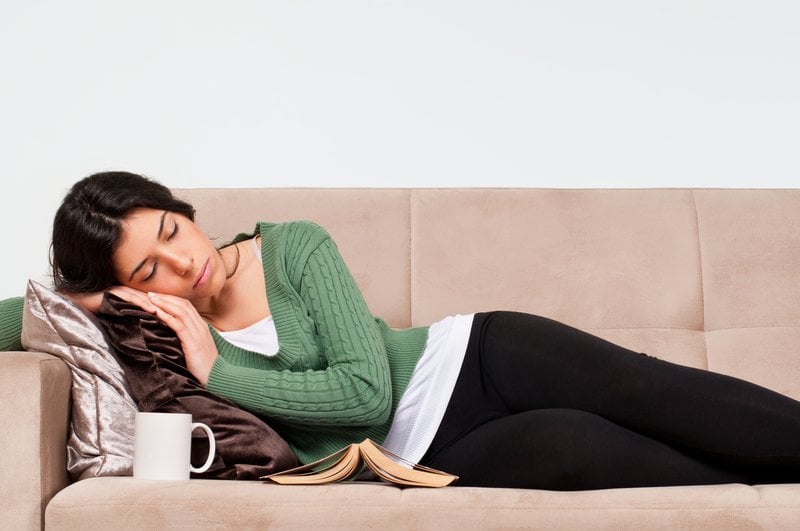Coffee Napping: What Is It? And Should You Try It?

With National Napping Day right around the corner, did you know that naps are really good for you and that caffeinating yourself just prior to a quick nap (also called coffee napping) is actually a thing. And, it could be a really good thing for you?!
Before spilling the beans on coffee napping, let’s take a step back and review some of the pros and cons of napping and how they relate to you.
Are There Drawbacks to Taking Naps?
Alas, yes, there can be a few drawbacks to taking naps, and it’s possible to take naps the “wrong way.”
- Naps can leave you feeling worse—if you’re the type who gets into a deep sleep and finds it hard to wake up, trying to take a nap can leave you feeling groggy and miserable.
- Taking a nap can make it harder to sleep later—yes, similar to “ruining your dinner” with afternoon snacks, afternoon naps, if taken too close to bedtime, can make it difficult to fall asleep and can cut into your sleep rhythm at night.
- The negativity associated with napping—yes, there can still be some negativity associated with napping. Some of the stigmas include that nappers are lazy, naps are for the elderly, naps are for babies, or only sick people should nap.
That said, not every culture has negative beliefs when it comes to napping. Many cultures consider a mid-day nap just a normal part of the day. A “siesta” is a short nap taken after lunchtime that allows one to rest and rejuvenate before embarking on the second half of the day. It’s also a common practice across Europe with a cup of tea or coffee and cookies or pastries as part of the tradition upon arising.
What is the “Right Way” to Take a Nap?
Now that you know some of the pitfalls of napping, you’re probably curious as to what the correct way to nap might be. Perhaps you often have the urge to nap but then tell yourself you really “shouldn’t” for various reasons. What if you are seriously missing out on some big bonuses that a nap could bring? What if a nap could actually be helpful?
Here are some of the benefits of napping:
- Alertness—done properly, a nap can help you feel more alert.
- Reduce stress—a short mental getaway can work wonders.
- Boost energy—taking a quick nap can give you quite a boost of energy, leaving you feeling refreshed and ready to face whatever the rest of your day may bring.
- Performance enhancement—some even say that a quick nap can improve performance and reaction time.
What is Coffee Napping?
So, now that we know why naps are so wonderful, you may be wondering, “What on earth is a coffee nap?” A coffee nap is basically having caffeine immediately before taking a catnap.
Since this seems completely backward, why could this be a good idea?
It turns out the body produces a chemical called adenosine, which helps to settle down your nervous system and promotes sleepiness. It makes you feel tired and helps to settle you down as you prepare for sleep. When you sleep, the adenosine levels decrease, allowing you to feel alert, rested, and energetic upon awakening.
When you drink coffee immediately before taking a nap, the caffeine lessens the ability of your brain receptors to recognize the adenosine (which would generally make you drowsy), and instead, the caffeine becomes readily available for your receptors. Since it takes a while for the caffeine you drink to hit your system, by the time it kicks in, your adenosine levels are already lessening (due to sleeping) and the caffeine is available and ready to do its magic.
How to Coffee Nap
If you’re ready to try coffee napping, there are a few “rules” to follow.
- Drink coffee immediately prior to napping. You don’t want to give the caffeine time to kick in before you have a chance to fall asleep.
- Drinking two cups of coffee seems to be the right amount of caffeine needed to do the trick. This equates to about 200 mg of caffeine.
- Your nap must be short. A 20-minute nap is the goal. This will allow you to wake up feeling energized but not fall into a deep sleep and REM cycles that will leave you feeling groggy.
- Don’t attempt a coffee nap less than about six hours before your regular bedtime, or you could be in for sleep inertia or disrupted sleep.
When you hit an afternoon slump and wonder if you should nap or have a cup of coffee, the answer could be, “Yes!” If you have tried coffee napping, we’d love to hear about your experience. Please share in the comments section below.






